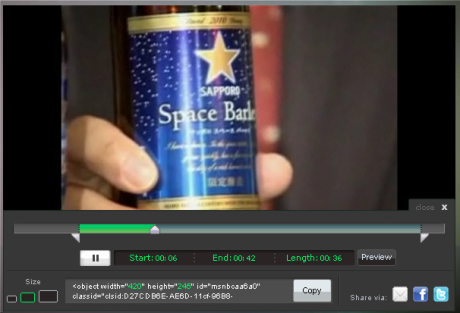Space Beer, Editable Video Clips, and Misleading the User, Oh My!
Intriguing content? Check. Easy-to-use online video editing? Check. Easy sharing via popular social networking sites? Check. Other than minor details, (like whether people actually want to edit and share snippets of news videos,) what could go wrong?
So I checked out MSNBC’s freshly launched update to their online video player, which adds basic video editing to a fairly standard set of sharing options. The editor, itself, is relatively well done. MSNBC kept it simple, allowing you to select a clip out of a video by dragging sliders in from the beginning and end. You get good, real-time feedback of where the video will start and how long the clip is, and you can preview your clip at any point.
To test this, I chose something with almost universal appeal—a story on Sapporo’s new “space beer”. Here’s a screenshot from previewing my clip:



